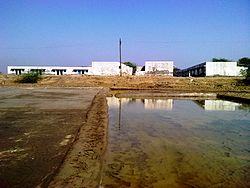
Gujarati is an Indo-Aryan language native to the Indian state of Gujarat and spoken predominantly by the Gujarati people. Gujarati is part of the greater Indo-European language family. Gujarati is descended from Old Gujarati. In India, it is the official language in the state of Gujarat, as well as an official language in the union territory of Dadra and Nagar Haveli and Daman and Diu. As of 2011, Gujarati is the 6th most widely spoken language in India by number of native speakers, spoken by 55.5 million speakers which amounts to about 4.5% of the total Indian population. It is the 26th most widely spoken language in the world by number of native speakers as of 2007.
The movement of Non-cooperation was launched on 4 September 1920 by Mahatma Gandhi with the aim of self-governance and obtaining full independence as the Indian National Congress (INC) withdrew its support for British reforms following the Rowlatt Act of 18 March 1919, and the Jallianwala Bagh massacre of 13 April 1919.

The Salt March, also known as the Salt Satyagraha, Dandi March and the Dandi Satyagraha, was an act of nonviolent civil disobedience in colonial India led by Mahatma Gandhi. The twenty five day march lasted from 12 March 1930 to 6 April 1930 as a direct action campaign of tax resistance and nonviolent protest against the British salt monopoly. Another reason for this march was that the Civil Disobedience Movement needed a strong inauguration that would inspire more people to follow Gandhi's example. Gandhi started this march with 78 of his trusted volunteers. The march spanned 240 miles (390 km), from Sabarmati Ashram to Dandi, which was called Navsari at that time. Growing numbers of Indians joined them along the way. When Gandhi broke the British Raj salt laws at 6:30 am on 6 April 1930, it sparked large scale acts of civil disobedience against the salt laws by millions of Indians.
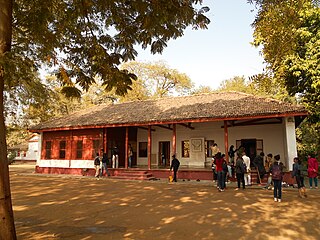
Sabarmati Ashram is located in the Sabarmati suburb of Ahmedabad, Gujarat, adjoining the Ashram Road, on the banks of the River Sabarmati, 4 miles (6.4 km) from the town hall. This was one of the many residences of Mahatma Gandhi who lived at Sabarmati (Gujarat) and Sevagram when he was not travelling across India or in prison. He lived in Sabarmati or Wardha for a total of twelve years with his wife Kasturba Gandhi and followers, including Vinoba Bhave. The Bhagavad Gita was recited here daily as part of the Ashram schedule.
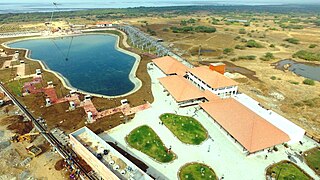
Dandi is a village in the Jalalpore taluka, Navsari District, Gujarat, India. It is located on the coast of the Arabian Sea near the city of Navsari.
The Swaraj Party was established as the Congress-Khilafat Swaraj Party. It was a political party formed in India in 1 January 1923 after the Gaya annual conference in December 1922 of the National Congress, that sought greater self-government and political freedom for the Indian people from the British Raj.
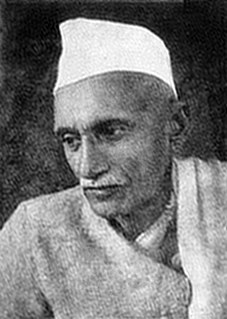
Ravishankar Vyas, better known as Ravishankar Maharaj, was an Indian independence activist, social worker and Gandhian from Gujarat.

Abbas Tyabji was an Indian freedom fighter from Gujarat, and an associate of Mahatma Gandhi. He also served as the Chief Justice of Baroda State. His grandson is historian Irfan Habib.
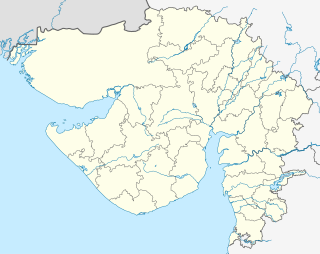
Navsari is a city, the ninth biggest municipality of Gujarat and the administrative headquarters Navsari District of Gujarat, India, located between Surat & Mumbai. Navsari is also the Twin City of Surat, and only 37 km south of Surat. In 2016, Navsari ranked as the 16th biggest city of Gujarat state of India by population in 2011. It used to rank 10th in 1991 to 2001. Navsari is the 25th "cleanest city of India" according to the Indian Ministry of Urban Development. Navsari is also a famous place due to the great Satyagraha march led by Mahatma Gandhi till the dandi.
Dharasana Satyagraha was a protest against the British salt tax in colonial India in May, 1930. Following the conclusion of the Salt March to Dandi, Mahatma Gandhi chose a non-violent raid of the Dharasana Salt Works in Gujarat as the next protest against British rule. Hundreds of satyagrahis were beaten by soldiers under British command at Dharasana. The ensuing publicity attracted world attention to the Indian independence movement and brought into question the legitimacy of British rule in India."The legitimacy of the Raj was never reestablished for the majority of Indians and an ever increasing number of British subjects."
In India, Flag Satyagraha is a campaign of peaceful civil disobedience during the Indian independence movement that focused on exercising the right and freedom to hoist the nationalist flag and challenge the legitimacy of the British Rule in India through the defiance of laws prohibiting the hoisting of nationalist flags and restricting civil freedoms. Flag Satyagrahas were conducted most notably in the city of Jabalpur and Nagpur in 1923 but also in many other parts of India.
Taxation of salt has occurred in India since the earliest times. However, this tax was greatly increased when the British East India Company began to establish its rule over provinces in India. In 1835, special taxes were imposed on Indian salt to facilitate its import. This paid huge dividends for the traders of the British East India Company. When the Crown took over the administration of India from the Company in 1858, the taxes were not replaced.

The Indian Great Depression of 1930 had a very severe impact on India, which was then under the rule of the British Raj. How much India was affected has been hotly debated. Native historians have argued that the Great Depression slowed long-term industrial development. Although revisionist scholars argue that depression had only a small impact in India's modern secondary sector: in terms of output, there was no depression in India between 1929 and 1934. However there were negative impacts on the jute industry, as world demand fell and prices plunged. Local markets in agriculture and small-scale industry showed modest gains. The Government of India adopted a protective trade policy which, though beneficial to the United Kingdom, caused great damage to the Indian economy. During the period 1929–1937, exports and imports fell drastically crippling seaborne international trade. The railways and the agricultural sector were the most affected.

South Gujarat, also known as Dakshin Gujarat, is a region in the Indian state of Gujarat. The region has a wetter climate than other regions of Gujarat. The western part is almost coastal and is known as Kantha Vistar, and the eastern part is also known as Dungar Vistar, which ranges from 100 to 1000 metres, with the highest peak at Saputara in the Dang district.

The Vedaranyam March was a framework of the nonviolent civil disobedience movement in British India. Modeled on the lines of Dandi March, which was led by Mahatma Gandhi on the western coast of India the month before, it was organised to protest the salt tax imposed by the British Raj in the colonial India.
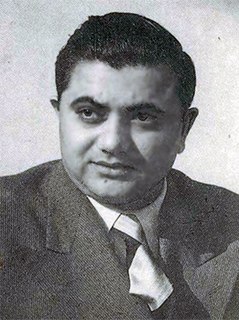
Krishnalal Shridharani was an Indian poet, playwright and journalist. He studied sociology, economics and journalism at various institutions in India and the US. He participated in the Indian independence movement and was imprisoned, during which time he started writing plays and poetry. He also wrote many non-fiction books in English.

Mithuben Hormusji Petit was one of the pioneer Indian independence female activists who participated in Mahatma Gandhi's Dandi March.

The National Salt Satyagraha Memorial or Dandi Memorial is a memorial in Dandi, Gujarat, India, that honors the activists and participants of the Salt Satyagraha, an act of nonviolent civil disobedience in colonial India which was led by Mahatma Gandhi in 1930. The memorial is spread over a 15 acres (61,000 m2) and is located in the coastal town of Dandi, where the Salt March ended on 5 April 1930 and the British salt monopoly was broken by producing salt by boiling sea water. The project was developed at an estimated cost of ₹89 crore (US$12 million).

Gandhi Smriti railway station is a small railway station on the Western Railway network in the state of Gujarat, India. Gandhi Smriti railway station is 3 km away from Navsari railway station. Passenger and MEMU trains halt here.
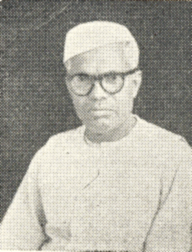
C Krishnan Nair (1902–?) was an Indian politician of the Indian National Congress, an Indian Independence activist, a Gandhian who participated in the Salt March of 1930 and a Member of the Indian Parliament of the First and Second Lok Sabha. He was popularly known as Delhi Gandhi or Nairji.
